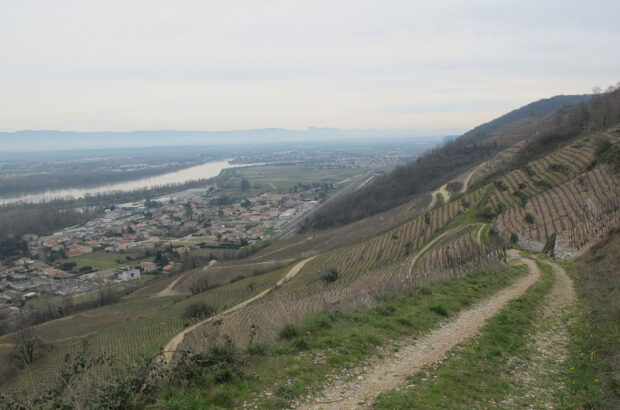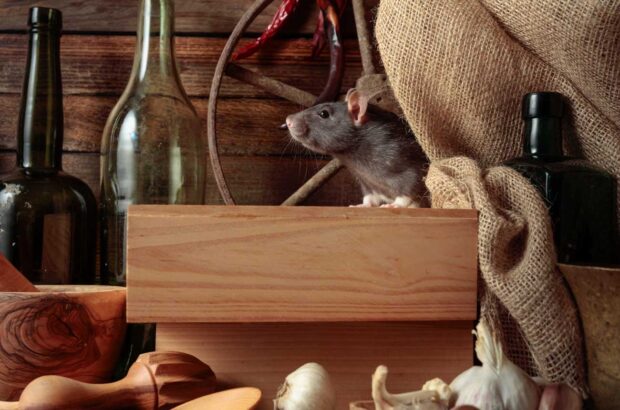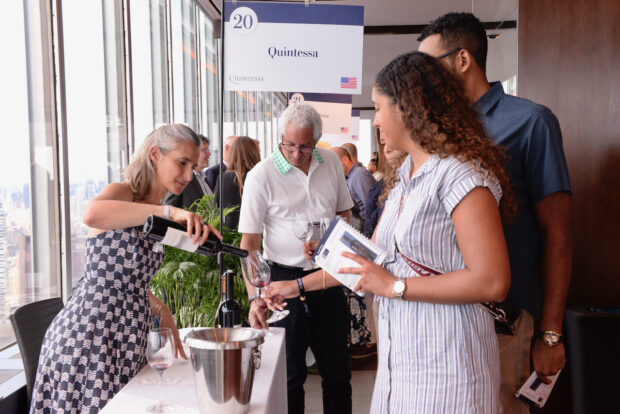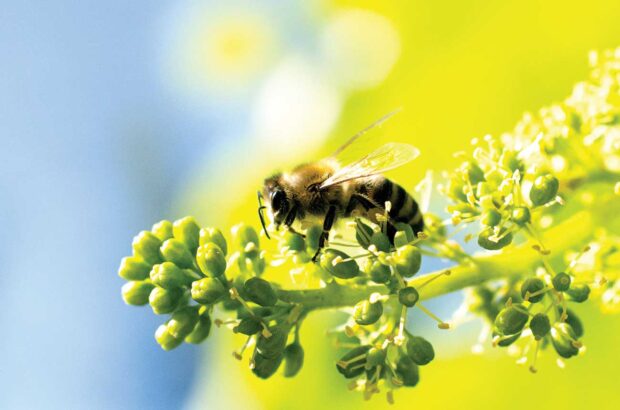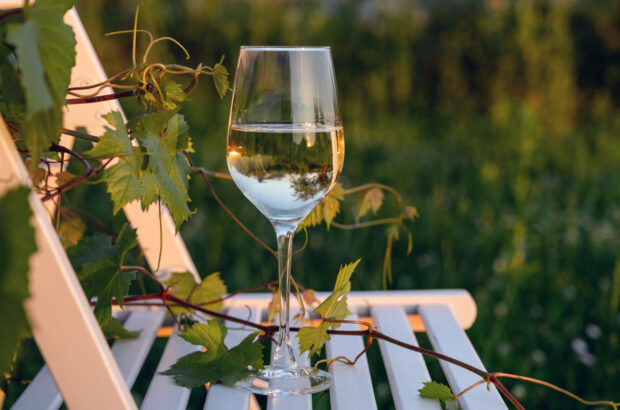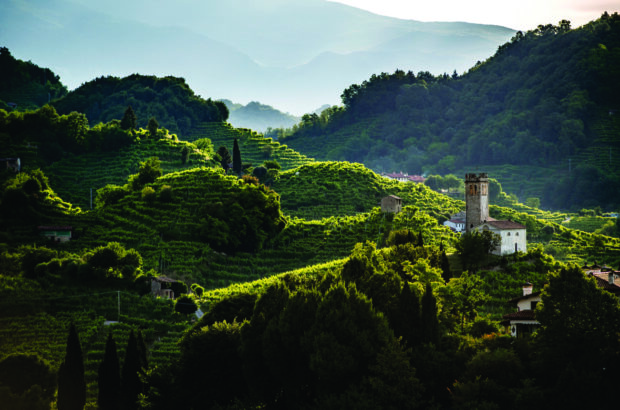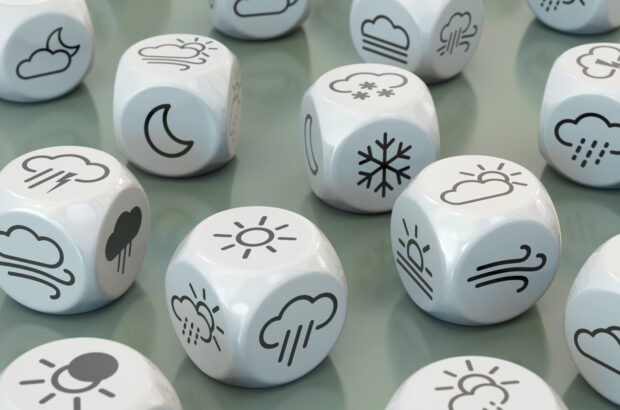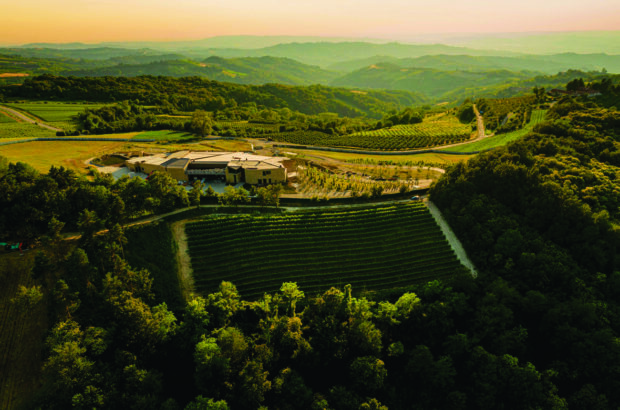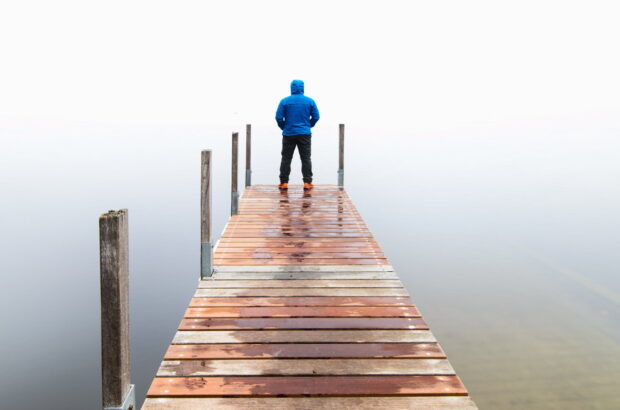By day, visitors to GranMonte winery in the Asoke valley in central Thailand can stroll past 12 wine grape varieties, cycle to a Michelin-rated restaurant, or sample a zingy Viognier; at night, elephants have been known to trample through the estate’s 14ha of vines. Further south, near some of Thailand’s popular golden beaches, sits Monsoon Valley winery, where swooping hornbills nest in empty oak barrels hung from ficus trees near rows of Shiraz vines. Welcome to wine tasting, Thai-style.
Now is a particularly good time for travelling wine lovers to visit Thailand, as in January the Thai government removed or reduced all of the taxes and excises on wine until the end of the year (although there’s hope the cuts will be extended into next year), including the swingeing 54%-60% tax on imported wine, in the hope of stimulating the tourism industry.
Thailand’s wine industry effectively began in the 1980s as a royal project aimed at weaning rural growers off opium production. Word around the wineries is that, thanks to constant innovation and deep pockets (the Red Bull and Singha beverage families are big investors), this sun-kissed nation now produces about a million bottles of wine per year.
Because this annual production is mostly consumed at vineyards set up for tourism, such as GranMonte and Monsoon Valley, it can be tricky to find the wines outside the country. Fortunately, every Thai winery is a destination in its own right where you can enjoy traditional activities such as wine tasting and fine dining, or try something more adventurous – maybe a 4×4 safari or mountain bike ride around one of the wildlife-rich estates. Tours offer a viticultural education that’s not to be found at any other commercial vineyard in the wine world.

Nikki Visootha Lohitnavy, GranMonte
Tropical Traits
Most of Thailand’s top wineries began planting in the late 1990s. So-called New Latitude Wines (a term coined by Thailand-based wine writer Frank Norel in 2003 to describe wines made from grapes grown outside the traditional 30°-50° latitudinal band considered most suitable for wine-growing) were in their infancy, so no blueprints existed for this tropical experiment. Bangkok is a long way from Bordeaux in more ways than one.
Many varieties that generally thrive in a warm climate failed. In the early years, Tempranillo was floored by humidity and mildew – the key killer in the tropics – though several Thai wineries successfully grow and make Tempranillo wines now. Bizarrely, many varieties more associated with temperate climates, such as Chenin Blanc and Marsanne, thrived in lofty hills that receive more annual rainfall than London, most of it compressed into a few monsoon months then captured in reservoirs from which elephants drink.
In Thailand’s tropical conditions, between latitudes 20°27’ and 5°37’ north, producers were originally able to harvest twice-yearly, but by the 2020s, most vineyards had opted to pick a single night-time harvest in the spring dry season (typically late January to mid-March), pickers gathering grapes in the cool of pre-dawn. The vines are pruned in April or May, to compel them to take a rest over the autumn monsoon, and then again in September-November at the start of the dry season, to stimulate the production of the next grape crop. In this manner, many vines have experienced 50 prunings, although depending on location and conditions, producers are able to manage how many harvests they take to make wine with over a two- to three-year period.
There’s one more reason to raise a glass to the Thai wine scene: buzzing Bangkok has become Asia’s culinary capital. The 2024 Michelin Guide flags every fine dining restaurant in town, where sommeliers will recommend cool pét-nat bars and wine stores that stock Thai sparklers.

Credit: JP Map Graphics
On a grand scale
One of the most accessible Thai wine experiences is Monsoon Valley. This destination vineyard sits about 35km by road from the icing-sugar beaches of Hua Hin, an upscale resort town two hours south of Bangkok, with night markets and waterfalls nearby. The 110ha estate has 48ha planted to vines and resembles the Napa Valley, but with added colourful tropical birds and golden pagodas in the background – visits can begin with a 3km mountain bike trail around the estate. Monsoon Valley is the flagship brand of Siam Winery. It was founded in 1986 by Chalerm Yoovidhya, whose family co-owns Red Bull (which reported sales of more than 12 billion cans in 2023) – and it shows. Wine lovers could spend a day visiting the fancy tasting room, eating in the Sala wine bar and bistro, spotting wildlife from a Land Rover or painting bottle labels with their kids.

The paradise beaches of Hua Hin can be found just 35km from Monsoon Valley. Credit: iStock / Getty Images Plus
The most panoramic place to sample the estate’s wines is in the glass-fronted restaurant, which serves cold meats from Hua Hin alongside local takes on veined British stilton and French tomme de vache cheese. Green curry risotto with local shrimp is a standout main course. ‘Thai wines pair well with sweet and salty food,’ says lead winemaker Suppached Sasomsin, who received EU funding to study viticulture in Angers, Valencia and Piacenza (in France, Spain and Italy, respectively). The proof? Monsoon Valley’s Premium Colombard has enough green apple and lemongrass vim to conquer a Thai feast, while the estate’s spicy Shiraz-based reds have been known to put tasters in mind of the SuperTuscan style when tasted blind.
For wine buffs, the most enticing news is that 29 varieties are currently being developed by German viticulture and research manager Jan Erik, the fruits of which Decanter readers can eventually sample in person with Erik or one of the team by emailing the vineyard in advance. ‘In Thai wine there are no rules except to keep experimenting,’ says Erik.
Two hours northeast of Bangkok, GranMonte is the largest independently owned vineyard in Thailand. It’s run by the second-generation Lohitnavy family – marketing and public relations expert Mimi and Nikki, Thailand’s first fully qualified oenologist and the country’s most acclaimed winemaker – and its impressive range of wines have secured numerous DWWA Bronze and Silver medals over several past years of the competition.
Hard work has gone into each glass of GranMonte’s pure Viognier 2023, which boasts a pink pepper finish longer than an elephant’s trunk. Nikki Lohitnavy began her sun-drenched, peripatetic training by studying oenology in Adelaide from 2005. She became a visiting winemaker in Portugal, Mexico, Venezuela and in Brazil’s remarkable São Francisco valley – 9° south of the Equator – among other places, so she knows how to make a humid vineyard sing. She’s assisted by specialised tech equipped with smart sensors that send data on a range of climatic variables including temperature, ultraviolet light, evaporation and humidity direct to her Apple watch.

Haew Suwat waterfall in Khao Yai National Park, about three hours to the northeast of Bangkok. Credit: Sarote Pruksachat / Getty Images
A morning breeze is channelled through GranMonte from the animal-rich Khao Yai National Park. Slow loris, the small nocturnal primate, can often be found nibbling at Nikki’s grapes. The breeze helps to keep the humidity and dreaded mildew at bay. The 350m-altitude vineyard offers visitors bikes to tour rural Michelin-recommended restaurants as well as the 14ha of vines, where current tests of 40 experimental varieties will fuel future crops. Cute vineyard accommodation (from £90 per night) overlooks lush Tuscany-meets-jungle topography.

Alcidini’s vineyards in the scenic high country to the northeast of Khao Yai National Park
Breakfast, lunch and dinner are served in VinCotto, the estate’s restaurant, which overlooks a tranquil lily pond framed by monkey flower trees. A favourite is the Thai set menu, which is accompanied by a choice of at least 20 cuvées from the annual production that generally exceeds 100,000 bottles. As Nikki explains: ‘We have no limits to Thai winemaking, so we let our customers try everything.’
Must-trys are the traditional-method Chenin Blanc Crémant Extra Brut, which fizzes like a grenade of Cava and limes, and the Heritage range pure Syrah – from a vineyard at 600m owned by another family – which explodes with rubber, followed by the revving finish of a Formula 1 car.
Inimitable character
The area’s boutique winery experience is Alcidini, established on a cool hilltop by owner Supot Krijpipudh, who learned his trade originally in Australia. ‘We borrowed the techniques, but the terroir and process are our own,’ he explains. The 550m-high location is so isolated that visitors include stargazers, who navigate the cosmos while sipping Muscat Bleu rosé beneath a macadamia tree. A favourite is Alcidini’s 2016 Shiraz. It features a high-octane nose and an intense finish. Another rarity is the winery’s chilled Recioto. It uses air-dried grapes in the style of the Veneto to create a fig jam-sweet dessert wine as punchy as a vintage Port.
Winery tours at PB Valley – the Khao Yai region’ first large commercial winery, established back in 1989 – offer a pioneering introduction to New Latitude Wines. ‘Electricity hadn’t even reached the valley,’ recalls chief winemaker Prayut Piangbunta. ‘We tried 40 or so varieties, basically everything that anybody suggested.’ Chenin Blanc proved exceptionally hardy, followed by Colombard and Shiraz, with Zinfandel a reliable recent introduction.

The Great Hornbill restaurant at PB Valley Khao Yai Winery
Today, Piangbunta’s team has shrunk production to 60,000 high-quality bottles. The wines are best sampled on the winery restaurant’s terrace, overlooking vines and shrubs of robusta coffee, which PB Valley also grows. The 2022 Khao Yai Reserve Chenin Blanc, from 20-year-old vines, hums with lychees. The 2015 Shiraz is a star: a tropically Rhône-like wine, buzzing with blackberry and grapefruit. As Piangbunta concludes: ‘We have given up making rules for Thai winemaking as we successfully grow dozens of varieties in a one-of-a-kind microclimate.’
Bangkok for wine lovers
Bangkok’s wine scene buzzes with innovation. Cool, architecturally ambitious mall The Commons in Saladaeng, near Lumphini Park, hosts sharing tables and pop-up style kiosks serving everything from pizza, dim sum and Taiwanese hot pot to matcha desserts. Up on the top floor, Cloud Wine pours noteworthy vintages arranged into sustainable, organic, biodynamic and natural sections, many of which can be purchased from its shop on the floor below.
If you’re in the mood for a break from wine, you’ll find killer cocktails at in-the-know jazz bar AloneTogether in the Watthana district, which substitutes gin and absinthe with Thai alcohols such as smoked coconut spirit and murraya leaf liquor.

The Tea Lounge at Capella hotel overlooks the river in central Bangkok
In 2023, ‘natural wine dive bar’ Mod Kaew moved into a terrace on an alley called Sathorn Soi 12 in the heart of the central business district. Inside, wine guy Vee (‘don’t call me a sommelier’) and his colleagues have curated a wall of more than 100 natural wines from far and wide, from Hungary to Argentina. It’s a hip destination in which to share a £44 bottle of orange Friuli alongside some Thai cold cuts.
Open since late 2023, the new Thonglor branch of epicurean grocery store Vivin has a gorgeously displayed selection of Thai wines, predominantly from GranMonte. The store hosts a cafe that turns into a bistro at night and bottles can be plucked from the shelf then enjoyed at cellar prices alongside dishes such as steak haché with Thai-Charolais beef. Franco-Australian-Thai owners Samantha and Nicolas have translated European tastes into further local offerings, such as burrata from Ratchaburi province and lemongrass gin from Phuket. The couple’s foodie knowledge is unsurpassed.
For restaurants, the 2024 Michelin Guide is a fine place to start, with some 180 establishments reviewed across Bangkok, from street stalls to Michelin-starred fine dining. Try Suan Thip (+66 2 583 3748), a laid-back riverside one-star restaurant in Pak Kret district serving Thai royal cuisine such as banana blossom salad and jumbo prawns, with dishes priced at just £8-£12.

Suan Thip
Far more upmarket is brand-new Michelin one-star Inddee (seven-course tasting menu £70) in Pathum Wan district, which serves cutting-edge subcontinental flavours such as stuffed morel mushrooms, foraged in Kashmir, from a theatrical open kitchen. The personalised wine pairing (also £70) from Michelin Sommelier Award-winner Thanakorn Bottorff is all about boutique wineries; it’s a fine wine and dining experience that costs half what it would in Europe. Of his nation’s winemaking, Bottorff notes: ‘Today, our wines win awards in blind tastings. In the future, Thailand has the potential to produce some truly great wines.’
Côte by Mauro Colagreco (set lunch £55, plus £45 for wine pairing) in Sathorn district is the Asian outpost of Mirazur in Menton, southeast France (ranked first in San Pellegrino’s 2019 World’s 50 Best Restaurants) where Japanese amberjack sashimi comes topped with papaya and caviar. Sommelier Sabino Iacobone is astonished by Bangkok’s increasing availability of top global wines. At Côte, Iacobone uses a Coravin wine preservation system, ‘so I can serve guests everything available’. Côte is housed in Capella (doubles from £471), the newest and fanciest of Bangkok’s five-star riverside hotels, with its own complimentary riverboat shuttle.

Côte by Mauro Colagreco
Spending the night in The Rose Residence (doubles from £95) is like staying in your aristocratic aunt’s Bangkok mansion – think marble floors, a private wine bar and a cute pool. This city centre oasis is an easy walk from historic Hua Lamphong train station, from where local trains chug to the wine-growing areas around Hua Hin and Khao Yai at the cost of £1 per ride; although the atmospheric journey is quicker and more comfortable by car.



